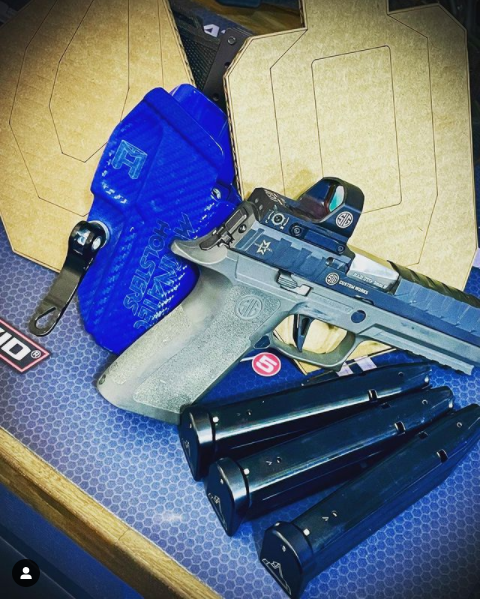Dryfire considerations
I will be releasing short dry practice or dryfire videos (www.myowndefender.com/dryfire) that you may choose to use to improve your abilities with your handgun. There is a lot that you can get done with these simple drills. Before releasing those I wanted to give you some general rules and my thoughts on dry practice so that you can get the most out of it.
9 thoughts:
- Abide by common sense dry practice rules. Be sure your gun is unloaded and all ammunition has been removed from your dryfire/dry practice room. Basic gun safety rules are still active even in dry fire sessions.
- Par times should be GOALS, not times that you make consistently.
- At the end of each repetition you must, at minimum, assess your grip and what you saw.
- Your grip must be constructed and used with the same strength as your live fire grip… In fact there is only ONE grip. Of the few shooters that actually dry fire on a regular basis, I would say the majority use a weaker, inconsistent grip that would not work in live fire.
- I would submit to you that arguably the most important part of dry practice is vision. If you are rushing to make a par time but you’re not seeing what you need to see during the drill, you are wasting your time. There are tons of videos out there where you see the crazy presentation punch out. The gun spends a good amount of time vibrating and wiggling at the end of the presentation which would make it really difficult to see what you need to see as you finish your press.
- As you spend more time dry firing you will notice that you don’t need to press the trigger very often to get a lot out of dry practicing. In fact I find it to be more of a waste of time to press the trigger and reset the slide rather than doing the exercise again to develop a great presentation with a great grip and learning to SEE more.
- There are no silver bullets, you must put in the work-if you don’t break a sweat and your arms/hands don’t get tired during dryfire, are you really working on skills that translate to live fire? Or are you just waving your gun around to chase “Instagram famous” par times.
- Do not include your trigger press in the majority of your drills’ par time. Rushing through the trigger press to make a par time is a bad idea. Maybe you are doing support hand drills where you want to get some more trigger manipulations… That’s totally acceptable, just finish your press after the par time and get a great trigger press. We have all seen it and possibly sometimes done it where you finish a drill with a trigger press to make sure it’s before the par time beep, but your vision did not see what it needed to see in order to actually guarantee the hit.
- I believe that just as you should not slow down in live fire to get your hits, you should also not increase your par time to make 100% of your repetitions. If you are making it 30 to 50% of the time, I would rather leave the time there and pick one thing each repetition that you can do sooner. Learning to react to the beep more aggressively, will solve a lot of problems for many people. On the same token if the par time is so quick that you never make it, you would consider adding just a little bit of time.
Committing to dryfire can be frustrating, boring, AND massively rewarding. Your mindset will dictate what you make of it. The overwhelming majority of proficient shooters on the planet have committed to a consistent regimen of dryfire.
Over the next few posts I will discuss drills that will be helpful for effective dryfire. For these I use a 1/3 size USPSA target. You can find these dryfire targets here.
Thank you for trusting My Own Defender with you firearms training.
GET ON IT! And don't forget to have fun!
